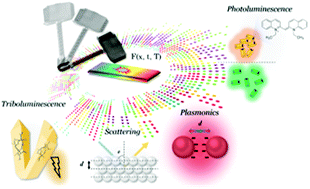Recent developments of colorimetric mechanical sensors based on polymer composites
Abstract
Colorimetric mechanical (force, pressure, strain, and impact) sensors allow naked-eye visualization of existing structural deformations of a system occurring upon application of a mechanical action. The combination of mechanochromic materials with polymers offers a practical approach to designing and fabricating these sensors. Polymers as matrices can tolerate a wide range of forces and permits reusability of the sensors. On the other hand, mechanochromic materials provide unique colour properties depending on the type of mechanical action. They have also been frequently employed for the quantification of mechanical forces. As an example, non-centrosymmetric crystals are combined with polymers for sensing impact forces. Structures with photoluminescence and scattering and plasmonic resonances can be used to fabricate strain and pressure responsive composite materials, respectively. This study reviews recent advances in colorimetric mechanical sensor systems prepared using polymers and inorganic and organic mechanochromic materials working under a wide range of forces.

- This article is part of the themed collection: Journal of Materials Chemistry C Recent Review Articles


 Please wait while we load your content...
Please wait while we load your content...